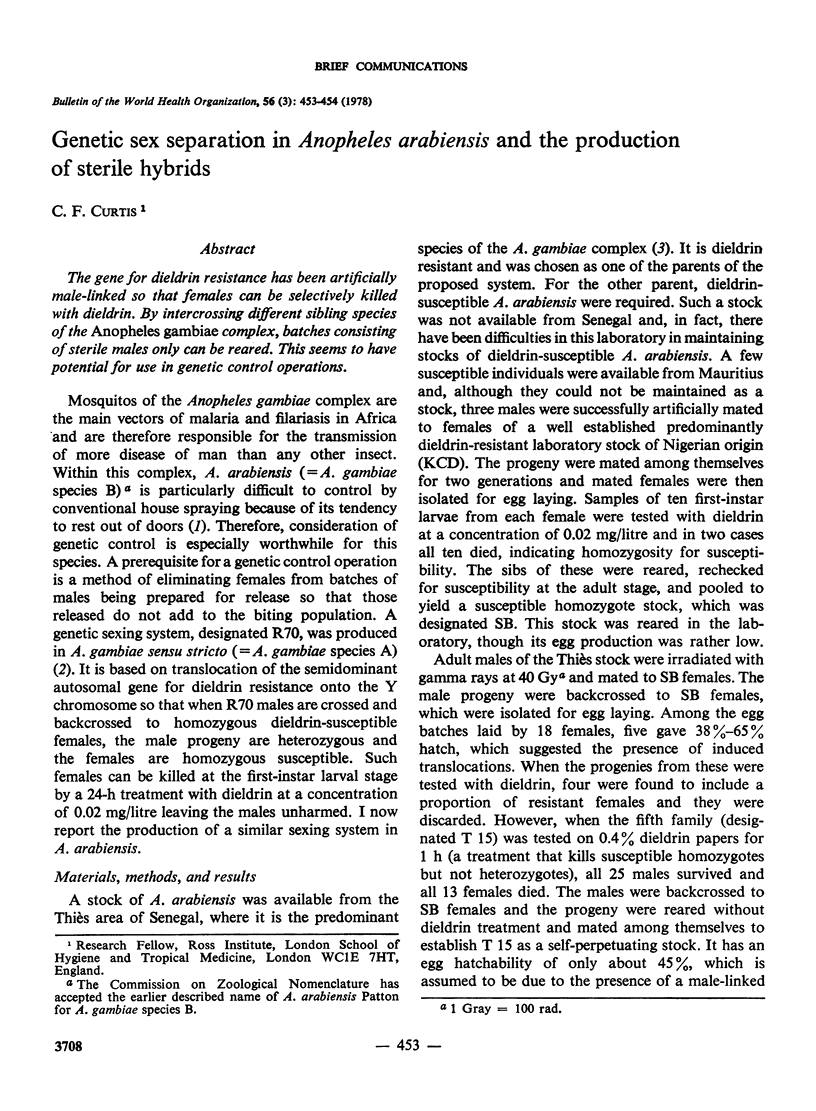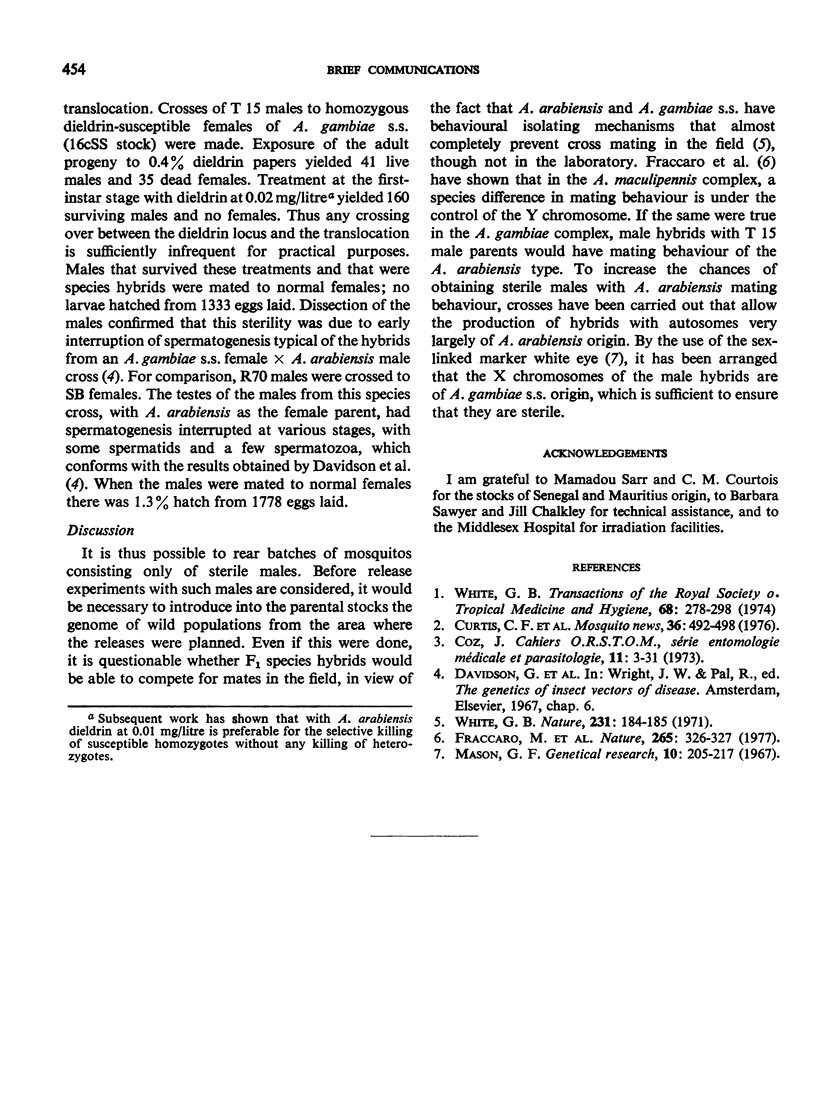Abstract
The gene for dieldrin resistance has been artificially male-linked so that females can be selectively killed with dieldrin. By intercrossing different sibling species of the Anopheles gambiae complex, batches consisting of sterile males only can be reared. This seems to have potential for use in genetic control operations.
Full text
PDF

Selected References
These references are in PubMed. This may not be the complete list of references from this article.
- Fraccaro M., Tiepolo L., Laudani U., Marchi A., Jayakar S. D. Y chromosome controls mating behaviour on Anopheles mosquitoes. Nature. 1977 Jan 27;265(5592):326–328. doi: 10.1038/265326a0. [DOI] [PubMed] [Google Scholar]
- Mason G. F. Genetic studies on mutations in species A and B of the Anopheles gambiae complex. Genet Res. 1967 Dec;10(3):205–217. doi: 10.1017/s001667230001096x. [DOI] [PubMed] [Google Scholar]
- White G. B. Chromosomal evidence for natural interspecific hybridization by mosquitoes of the Anopheles gambiae complex. Nature. 1971 May 21;231(5299):184–185. doi: 10.1038/231184a0. [DOI] [PubMed] [Google Scholar]


